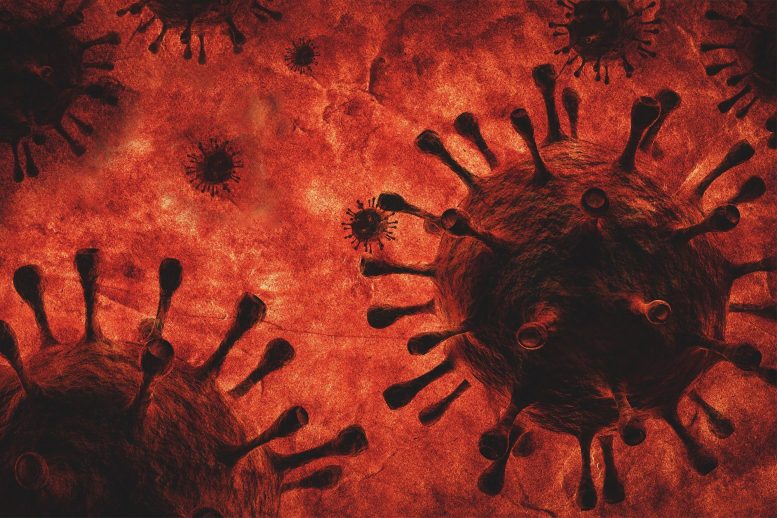
COVID-19 is an infectious disease caused by the SARS-CoV-2 virus.
A new study explains why some people suffer more from COVID-19 than others.
Many people are currently catching COVID-19. Luckily, the majority of them are experiencing only mild symptoms. However, for some people, the disease takes a much more severe cause and our understanding of the underlying reasons is still insufficient. The human genome may hold a key to why COVID-19 is more serious for some individuals than others.
A team of researchers from the Berlin Institute of Health at Charité (BIH) together with colleagues from the United Kingdom and Canada have found genes and proteins that contribute to a higher risk of severe COVID-19. Their findings were recently published in Nature Communications.
Doctors and scientists around the world are still confused as to why some people become severely ill when infected with SARS-CoV-2 (the virus that causes the COVID-19 disease), while others experience only mild symptoms. A team of scientists at the BIH’s Digital Health Center has identified genes that – in addition to known risk factors such as age and sex – predispose people to experience a more serious infection.
“It has been observed relatively early on that susceptibility to infection depends on a person’s blood group, for example, which is inherited,” explains Maik Pietzner, the study’s lead author. “So it was clear that the course of the disease is at least in part determined by genetics.”
“Scientists at the BIH were given access to genetic data that researchers had collected from COVID-19 patients worldwide, which also included disease severity. At the time, there were some 17 genomic regions observed to be associated with a higher risk of severe COVID-19,” Pietzner explains, “but the causal genes and underlying mechanism remained unknown for many.”
Previously, the Computational Medicine Group at BIH had developed a ‘proteogenomic’ approach to link protein-encoding regions of DNA to diseases via the protein product. In this new study, they applied this method to COVID-19 and came across eight particularly interesting proteins. “One of these was a protein responsible for an individual’s blood group,” Claudia Langenberg, head of the Computational Medicine Group, explains.
“We were aware that this gene was associated with the risk of infection, so it was like a proof of concept. The protein ELF5, meanwhile, seemed like it could be much more relevant. We found that COVID-19 patients carrying a variant in the gene that encodes ELF5 were more much more likely to be hospitalized and ventilated, in some cases even died – so we took a closer look.”
The team turned to their colleagues from the Intelligent Imaging Group, led by Christian Conrad, due to their expertise in single-cell analyses. Lorenz Chua, a doctoral student in the group was immediately enthusiastic to figure out which cells displayed a particular abundance of the ELF5 protein: “We found that ELF5 is present in all surface cells of the skin and mucous membranes, but is produced in particularly large quantities in the lungs. Since this is where the virus causes most of its damage, this seemed very plausible.”
But Conrad puts a damper on any hopes that the researchers may have identified a new target molecule for drug development: “ELF5 is what is known as a transcription factor, and controls how frequently or infrequently other genes are switched on and off throughout the body,” he explains. “Unfortunately, it is difficult to imagine interfering with this protein in any way, as that would undoubtedly cause many undesirable side effects.”
Among the eight suspects, however, the scientists discovered another intriguing candidate: the protein G-CSF, which acts as a growth factor for blood cells. They discovered that COVID-19 patients who make genetically more G-CSF had a milder disease course. Synthetic G-CSF has long been available as a drug, therefore it is possible for it to be used as a treatment for COVID-19.
Translation of such genetic discoveries into clinical application is not an easy or quick process. The work – only possible through the support of many scientists and clinicians of the BIH and Charité, and open access results from studies around the world – highlights how open science and an international team effort can step by step uncover how the smallest changes in our genetic make-up alter the course of a disease, COVID-19 in this example.
“We started with global data from 100,000 participants and ended up looking at single molecules in individual cells. We believe that collaborations that allow us to rapidly move from the bigger picture and studying large populations to in-depth molecular follow-up can help to better understand the clinical consequences of this virus and teach us important lessons for future pandemics,” Pietzner concludes.
Reference: “ELF5 is a potential respiratory epithelial cell-specific risk gene for severe COVID-19” by Maik Pietzner, Robert Lorenz Chua, Eleanor Wheeler, Katharina Jechow, Julian D. S. Willett, Helena Radbruch, Saskia Trump, Bettina Heidecker, Hugo Zeberg, Frank L. Heppner, Roland Eils, Marcus A. Mall, J. Brent Richards, Leif-Erik Sander, Irina Lehmann, Sören Lukassen, Nicholas J. Wareham, Christian Conrad, and Claudia Langenberg, 15 August 2022, Nature Communications.
DOI: 10.1038/s41467-022-31999-6

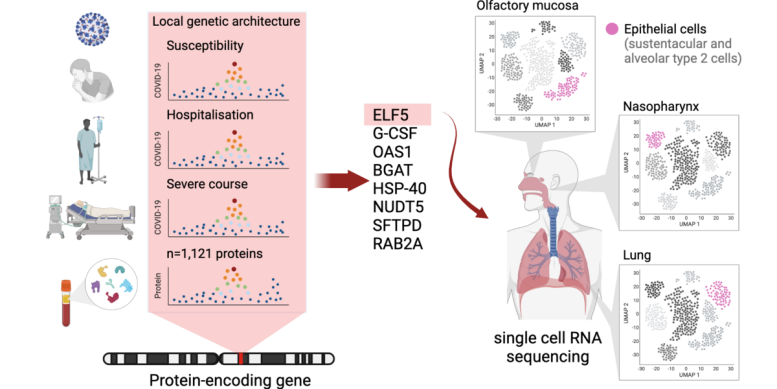

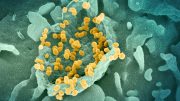
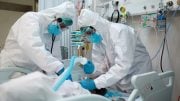
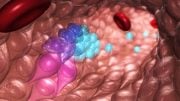

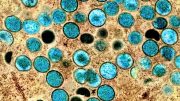


Be the first to comment on "Why Is COVID Worse for Some People Than Others?"